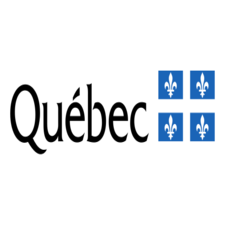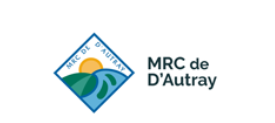Orthomosaic
Type of resources
Available actions
Topics
Keywords
Contact for the resource
Provided by
Formats
Representation types
Update frequencies
status
Service types
-

[IS] WMS þjónusta fyrir drónamyndir frá Landmælingum Íslands. [EN] WMS service to serve drone imagery from the national land survey of Iceland.
-

[IS] Náttúrufræðistofnun heldur utan um kontrólpunkta sem er settir niður til að staðsetja loftmyndir. Í flestum tilfellum er um ræða hvíta ferningar sem eru 60x60 sm, en á jöklum eru þeir bleikir. Þar sem ekki er hægt að setja niður kontólpunkta í formi ferninga er miðað við aðra fasta punkta í landslaginu. X, Y nákvæmni: 2-3 sm Hæðarnákvæmni: 3-5 sm Fitjueigindir, útskýringar: efni_raun: Lýsir gerð punktsins (Náttúrulegur punktur, Gúmmímotta, Málað, Suðuplast, Bleik plata). Eiginleiki mynd sýnir hvað er mælt, almennt miðjan á hlutnum nema annað sé tekið fram á myndinni. austur_maelt: Austur-hnit í ISN2016 EPSG:8088 nordur_maelt: Norður-hnit í ISN2016 EPSG:8088 ish_haed_maelt: ish2004 hæð sporvolu_haed_maelt: Hæð yfir ellipsoíð dagsetning_maelt: Mælingardagur mynd: Hlekkur á mynd af punktinum (ef tiltækt) maeli_adferd: Mæliaðferð, hvort sem er RTK eða FastStatic [EN] This dataset contains ground control points placed by the Icelandic Institute for Nature Research that can be used for aerial imagery geolocation. Normally white squares of 60x60cm or natural objects or pink squares 60x60cm on glaciers. X, Y Precision: 2-3 cm Elevation precision: 3-5 cm Properties description: efni_raun: describes the type of point (Natual point, Rubber mat, Painted, Welded plastic, Pink plate), the property mynd shows what is measured, generally the center of the object if not indicated differently in the image. austur_maelt: easting in ISN2016 EPSG:8088 nordur_maelt: northing in ISN2016 EPSG:8088 ish_haed_maelt: ish2004 elevation sporvolu_haed_maelt: ellipsoidal height dagsetning_maelt: date of measurement mynd: link to the image of the point (if available) maeli_adferd: Measurement method if RTK or FastStatic
-
* These mosaics are the result of an assembly of orthophotographs produced in spring 2023. * Each image has been positioned geographically taking into account the effect of the relief. * These mosaics are the result of regional partnerships. * They are free to download, as they were acquired under an open data license (Creative Commons 4.0). * The territory covers all municipalities and MRCs in the administrative region of Montérégie, excluding the Montreal Metropolitan Community (CMM) with the exception of the MRCs of Vaudreuil-Soulanges, Beauharnois-Salaberry, and Rouville whose territory is included in the coverage. * Format: GeoTIFF associated with a 5 km x 5 km tile cut. * The spatial resolution is 20 cm. * The image type is natural color.**This third party metadata element was translated using an automated translation tool (Amazon Translate).**
-
* These mosaics are the result of an assembly of orthophotographs produced in spring 2023. Each image has been positioned geographically taking into account the effect of the relief. * These mosaics are the result of regional partnerships. They are free to download, as they were acquired under an open data license (Creative Commons 4.0). * The territory covers all municipalities and MRCs in the Estrie administrative region. * Format: GeoTIFF associated with a 5 km x 5 km tile cut. * The spatial resolution is 20 cm. * The image type is natural color.**This third party metadata element was translated using an automated translation tool (Amazon Translate).**
-

As part of measure 2.6 of the 2013-2020 Action Plan on Climate Change, and in the wake of the project “[Characterization of the banks of the fluvial part of the St. Lawrence and analysis of the evolution of hydro-climatic factors influencing erosion and flooding hazards] (https://www.donneesquebec.ca/recherche/dataset/caracterisation-des-berges-et-analyse-de-l-evolution-des-facteurs-hydro-climatiques)” ()”, the MELCCFP mandated the team of the **Laboratoire de Géomorphology Terre-Mer du Département de Géomorphology de l'Université Laval ** in order to conduct a study on the mobility issues of banks in the fluvial section of the St. Lawrence. The selection of the six issues, spread over ten sites of interest, was based on the previous shoreline characterization project, which made it possible to locate significant problems related to shoreline mobility. The six issues addressed correspond to: 1. The archipelagos of the fluvial St. Lawrence and the seaway (sites of Île Marie, Île de Grace and Île des Barques) 2. Land use planning and delta formation in Lake Saint-Pierre (Yamachiche Point site) 3. The degradation of the sloping walls between Sainte-Marthe-du-Cap and Champlain (Pointe-au-Vent and Champlain sites) 4. The rapid dynamics of high soft cliffs (Cap Lévrard site) 5. The effects of docks on sedimentary transit in the fluvial estuary (Portneuf and Pointe-Platon sites) 6. The management of urban beaches in Quebec (site of Plage-Jacques-Cartier, Anse-Tibbits and Beauport Bay beach) This new study has thus made it possible to provide scientific knowledge adapted to the specificities of this densely populated sector of the river, in order to (1) better understand the hydrogeomorphological trajectory of this large fluvial system, and (2) to guide management practices towards better respect for its mobility space and the integrity of its ecosystems. The development of a multi-scale monitoring approach, combining geomorphological and geohistorical components, has proven to be very effective in documenting the implications of the highly artificial nature of the fluvial St. Lawrence and in better defining the influence of natural processes. The project was made possible thanks to the creation of a vast geospatial database, collected and processed by the research team. In a process of sharing and disseminating, the team makes available all the deliverables and geospatial data* produced during this study, in particular: A comprehensive report detailing the context of the study, the methodology, the results in the form of six extensively illustrated Mobility-Trajectory sheets, as well as a summary accompanied by a discussion on the impacts of land use planning along the fluvial St. Lawrence. Self-supported version of the six Mobility-Trajectory portrait sheets. Geospatial data associated with the historical mapping of coastline features (CTs) and their migration rates, as well as products derived from drone imagery, such as numerical surface models (MNS) and orthomosaics. *Higher spatial and temporal resolution data are available upon request. **This third party metadata element was translated using an automated translation tool (Amazon Translate).**
-

Orthophotographs of the administrative region of Chaudière-Appalaches, produced in spring 2020 **This third party metadata element was translated using an automated translation tool (Amazon Translate).**
-

* These mosaics are the result of an assembly of orthophotographs produced in spring 2023. Each image has been positioned geographically taking into account the effect of the relief. * These mosaics are the result of regional partnerships. They are free to download, as they were acquired under an open data license (Creative Commons 4.0). * The territory covers the MRC of Charlevoix and the MRC of Charlevoix-Est * GeoTIFF associated with a 2 km x 2 km tile cut * The spatial resolution is 20 cm. * The image type is natural color. **This third party metadata element was translated using an automated translation tool (Amazon Translate).**
-

* These mosaics are the result of an assembly of orthophotographs produced in spring 2023. Each image has been positioned geographically taking into account the effect of the relief. * These mosaics are the result of regional partnerships. They are free to download, as they were acquired under an open data license (Creative Commons 4.0). * The territory covers the MRC Les Chenaux and part of the MRCs of Maskinongé, Mékinac and La Tuque. * GeoTIFF associated with a 2 km x 2 km tile cut. * The spatial resolution is 20 cm. * The image type is natural color. **This third party metadata element was translated using an automated translation tool (Amazon Translate).**
-

* These mosaics are the result of an assembly of orthophotographs produced in spring 2023 and 2024. Each image has been positioned geographically taking into account the effect of the relief. * These mosaics are the result of regional partnerships. They are free to download, as they were acquired under an open data license (Creative Commons 4.0). * The territory covers the MRC of Joliette, Montcalm, Matawinie as well as the MRC of D'Autray excluding the city of Lavaltrie. * GeoTIFF associated with a 2 km x 2 km tile cut. * JPEG 2000 associated with division by MRC (regional county municipality). * The spatial resolution is 20 cm. * The image type is natural color. **This third party metadata element was translated using an automated translation tool (Amazon Translate).**
 Arctic SDI catalogue
Arctic SDI catalogue
